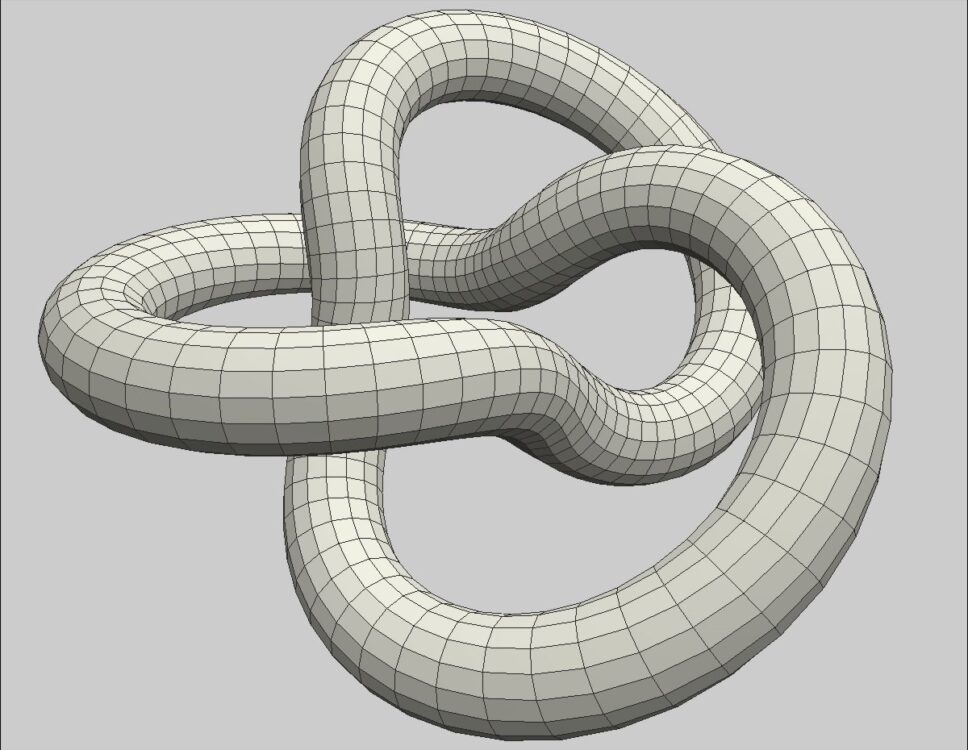From tying shoes to untangling a power cord to just playing with a piece of string, most people have a passing familiarity with knots. Those with climbing or seafaring experience may even be an expert at tying ropes into every manner of shape for every manner of purpose. But few would go so far as to define knots, describing their shapes and properties — here is where knot theory lies, the mathematical framework becoming a tool for scientists studying complex molecules.
The knots of everyday life often take the form of one or more pieces of string bound together by some form of entanglement. In mathematics, however, knots look and act very differently. Mathematical knots do not have loose, open ends like overhand knots, nor do they necessarily secure things together like square knots, but are instead closed rings tangled upon themselves.
Knot theory is the mathematical study of these bound rings, categorizing and quantifying their properties. The field was first described by French mathematician Alexandre-Théophile Vandermonde in 1771, but researchers only started seriously considering and developing the field around the beginning of the twentieth century.
The greatest difficulty of knot theory is, ironically, defining knots. Two knots are equivalent, or more formally homeomorphic, if there exists a set of moves, called Reidemeister moves, capable of transforming one knot into the other without cutting the loop or lifting the entire knot from the plane.
“The greatest difficulty of knot theory is, ironically, defining knots.”
Even the simplest of knots, the single untangled closed ring often called the “unknot,” has many non-trivial homeomorphisms, making them impossible to distinguish at a glance. As such, instead of attempting to work with diagrams, mathematicians have attempted to represent knots in a myriad of different numerical forms.
The most common way of reducing a knot numerically is by way of knot polynomials, which are invariant, meaning they persist between Reidemeister moves. The first knot polynomials were discovered by American mathematician James Waddell Alexander II in 1923 by attaching numerical significance to the pattern of crossings within knots.
These Alexander polynomials, as they came to be called, were later generalized into HOMFLY polynomials, named after the initials of the six mathematicians who concurrently discovered the numerical method. These polynomials proved more robust in examining composite knots, or knots comprised of several smaller, more well-understood knots.
The problem with knot polynomials is that, while invariant, they are not necessarily unique. For example, Alexander polynomials are incapable of distinguishing between left- and right-handed knots, which are generally not homeomorphic. The question as to whether it is even possible to uniquely quantify a knot is still open in mathematics.
As interesting as modeling knots may be, it would be forgiven for questioning its utility beyond pure mathematics. After all, our best method for tabulating even “simple” knots before the advent of digital computers was doing so by hand in large tables.
However, knot theory has, in recent years, found use in applied chemistry and molecular biology, specifically with respect to modeling molecular structures. Researchers in these fields are using the mathematical tools developed over the past 250 years to categorize different types of knots to describe and quantify different types of molecular structures.
“Knot theory has, in recent years, found use in applied chemistry and molecular biology.”
The most straightforward example is in material science, where the vernacular of knot theory can be used to describe literal molecular knots, specifically polymers whose molecular structure consists of interlinked knots. In molecular biology, the same nomenclature and mathematics have been used to study the shape of proteins and even DNA rings.
That being said, the field — both its tools and applications — is still nascent. While more nuanced mathematical tools and knot invariants have been discovered, they have yet to be fully utilized in a novel way. Researchers hope to find more correlations between knot invariants and molecules, so as to more easily define and describe complex interleaved structures.
Even so, the field still has many unanswered questions, leaving researchers with many loose ends to tie up, hopefully pushing forward the boundary of mathematics and chemistry alike.
- Chemical Society Reviews (2016). DOI: 10.1039/C6CS00448B.
- Knot Theory (2004). ISBN: 9780415310017.
- Knot Theory and Its Applications (1996). ISBN: 978-0817647186.
- New Directions in Geometric and Applied Knot Theory (2022). ISBN: 978-3-11-057149-3.
